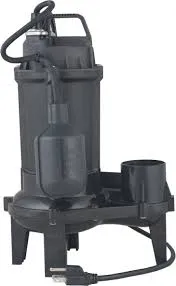English
- Afrikaans
- Albanian
- Amharic
- Arabic
- Armenian
- Azerbaijani
- Basque
- Belarusian
- Bengali
- Bosnian
- Bulgarian
- Catalan
- Cebuano
- Corsican
- Croatian
- Czech
- Danish
- Dutch
- English
- Esperanto
- Estonian
- Finnish
- French
- Frisian
- Galician
- Georgian
- German
- Greek
- Gujarati
- Haitian Creole
- hausa
- hawaiian
- Hebrew
- Hindi
- Miao
- Hungarian
- Icelandic
- igbo
- Indonesian
- irish
- Italian
- Japanese
- Javanese
- Kannada
- kazakh
- Khmer
- Rwandese
- Korean
- Kurdish
- Kyrgyz
- Lao
- Latin
- Latvian
- Lithuanian
- Luxembourgish
- Macedonian
- Malgashi
- Malay
- Malayalam
- Maltese
- Maori
- Marathi
- Mongolian
- Myanmar
- Nepali
- Norwegian
- Norwegian
- Occitan
- Pashto
- Persian
- Polish
- Portuguese
- Punjabi
- Romanian
- Russian
- Samoan
- Scottish Gaelic
- Serbian
- Sesotho
- Shona
- Sindhi
- Sinhala
- Slovak
- Slovenian
- Somali
- Spanish
- Sundanese
- Swahili
- Swedish
- Tagalog
- Tajik
- Tamil
- Tatar
- Telugu
- Thai
- Turkish
- Turkmen
- Ukrainian
- Urdu
- Uighur
- Uzbek
- Vietnamese
- Welsh
- Bantu
- Yiddish
- Yoruba
- Zulu
Telephone: +86 13120555503
Email: frank@cypump.com
Dec . 18, 2024 15:45 Back to list
Choosing the Right Sump Pump for Your Home's Sewer System
Understanding Sump Pumps for Sewer Lines
Sump pumps play a crucial role in maintaining the integrity of residential and commercial buildings, particularly in areas prone to flooding or excessive groundwater. While primarily known for managing water accumulation in basements, their significance extends to sewer lines as well, making them an essential consideration for homeowners and property managers.
What is a Sump Pump?
A sump pump is a device used to remove water that has accumulated in a sump basin, a specially constructed pit typically found in the basement or crawl space of a building. The pump is activated automatically when the water level rises to a certain point, directing excess water away from the structure through a discharge pipe. Though often associated with groundwater management, sump pumps can also effectively handle sewage and wastewater concerns.
Why Use a Sump Pump in Sewer Lines?
In many situations, traditional gravity sewer systems can be insufficient, particularly in low-lying areas or where the sewer line is located below the level of the municipal sewer system. In such scenarios, a sump pump becomes an invaluable asset, ensuring that sewage and wastewater can be expelled from the property without backing up.
1. Preventing Backups Backups can lead to serious issues, including flooding, unpleasant odors, and potential health hazards. A sump pump helps prevent these problems by actively removing wastewater from the sump pit, reducing the risk of overflow in household drains.
2. Protecting Property Water damage can be destructive, often leading to costly repairs and health risks due to mold and mildew. Installing a sump pump helps protect both the physical structure and the health of inhabitants by managing moisture levels effectively.
3. Improving Drainage Proper drainage is essential in any property, especially in regions with heavy rainfall or during melting snow seasons. A sump pump ensures that excess water does not accumulate and cause issues, particularly in sewer lines that may otherwise remain passive.
sump pump for sewer line

Types of Sump Pumps
There are two primary types of sump pumps available submersible pumps and pedestal pumps.
- Submersible Pumps These pumps are installed underwater in the sump pit. They are typically more efficient and quieter because they are designed to operate submerged. Their sealed designs also protect them from moisture.
- Pedestal Pumps These pumps are positioned above the sump pit. While they tend to be less expensive and easier to maintain, they are usually noisier and may not be as efficient as submersible options.
Installation and Maintenance
Installing a sump pump is a task best left to professionals, particularly when dealing with sewer lines. Factors like the depth of the sump, the size of the pump, and local plumbing codes must all be considered. Once installed, regular maintenance is essential to ensure the pump operates effectively. This includes testing the pump periodically, cleaning the sump pit, and checking the discharge line for blockages.
Conclusion
In conclusion, sump pumps are vital components in managing water and sewage in residential and commercial properties alike. When properly installed and maintained, they can significantly reduce the risk of water damage, prevent sewage backups, and enhance overall drainage efficiency. Whether you live in a flood-prone area or want to safeguard your property from potential wastewater issues, investing in a sump pump for your sewer line is a wise decision that provides peace of mind and protect your investment. If you have concerns about your current drainage system, consult with a plumbing professional to explore the benefits of adding a sump pump to your property.
-
ISG Series Vertical Pipeline Pump - Chi Yuan Pumps Co., LTD.|High Efficiency, Energy Saving, Low Noise
NewsJul.30,2025
-
ISG Series Vertical Pipeline Pump- Chi Yuan Pumps|High Efficiency&Low Noise
NewsJul.30,2025
-
ISG Series Vertical Pipeline Pump-Chi Yuan Pumps Co., LTD.|High Efficiency&Energy Conservation
NewsJul.30,2025
-
ISG Series Vertical Pipeline Pump - Chi Yuan Pumps Co., LTD.|Advanced Hydraulic Design&Energy-Efficient Solutions
NewsJul.30,2025
-
ISG Series Vertical Pipeline Pump - Chi Yuan Pumps Co., LTD.
NewsJul.30,2025
-
ISG Series Vertical Pipeline Pump - Chi Yuan Pumps Co., LTD.|energy-efficient fluid handling&industrial durability
NewsJul.30,2025










